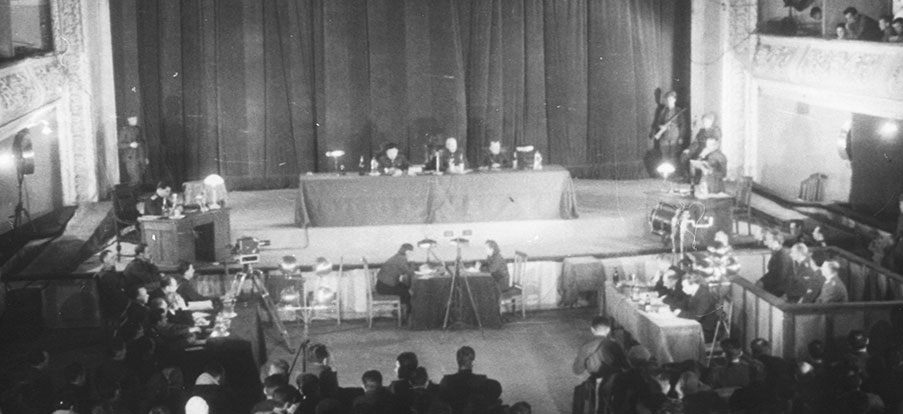Detail
of the research theme
Présentation
Make a story in equal parts of East-European public trials
The criminal innovations initiated by the Nuremberg trial in 1945-1946 have been the subject of numerous studies both in the field of international law and in the history of the Second World War and the Holocaust. By widening the scope to the countries of Central and Eastern Europe and Russia, and the period studied from 1943 to 1991, the project aims to reveal the possible singularities of the political, social and symbolic trajectories of East European public trials envisaged for the first time over a long period of time, in comparison with their Western European counterparts. Special attention is thus paid to the various actors who co-produce the legal action and the stories that the latter contributes to promote in the public space in the countries studied as well as abroad. The backdrop against which these events stand out is not neglected. The research returns to the notion of «screen events« often applied to political trials, deepening the questioning about the functions, uses, (re) appropriation of the publicized trials in the whole of the procedures aimed at war criminals. At the same time, we’ll consider circulations between East and West: legal models, normative frameworks, practices and imaginations of the justice, but also, more concretely of men, of evidence and documents, stories.
A political, social and transnational history from the war years to the disappearance of Soviet-style regimes
The research combines three main approaches. A political and judicial approach, by studied country: we’ll identify, over fifty years, the shifting political stakes of these public / mediatized trials, but we will also examine the laws and devices put in place. Special attention is paid to the years 1958-1970, the scene of a new wave of trials in several countries of the East but also of an East / West confrontation about the fate to be reserved to the still unpunished Nazi criminals (and their accomplices). A social and cultural approach: which individuals, groups, professionals and institutions are involved in organizing these trials? What place is given to the trials in the public space of these countries, be it the official «acclamative« public sphere, mid-level public spheres, or niches of dissent? What stories of the Second World War and what portraits of his victims and their executioners do they draw, particularly through the media and the arts? A transnational approach: beyond the East-West confrontation on this issue, which it is important to analyze in detail and with special chronological rigor, what cooperation, circulation can be observed both inside the Soviet bloc and between the latter and other international actors? These three approaches will be conducted in a constant dialogue with the historiography of the trials held in the West (Europe, Israel, United States, Canada, Australia).
